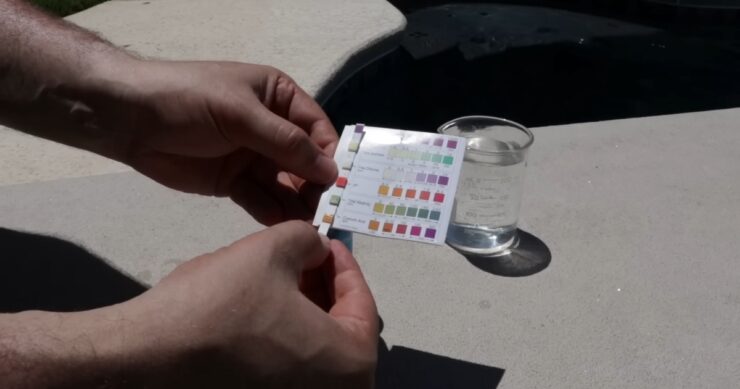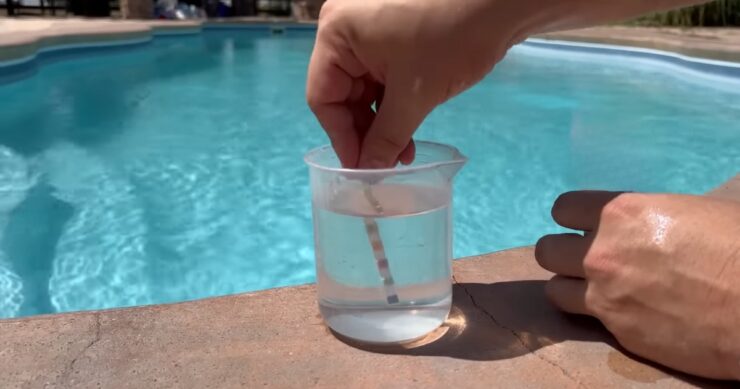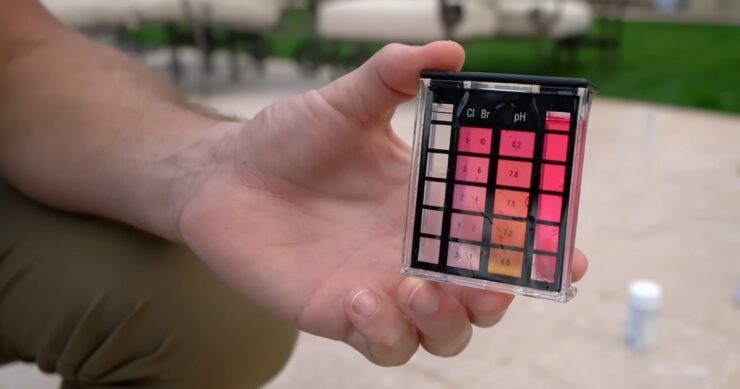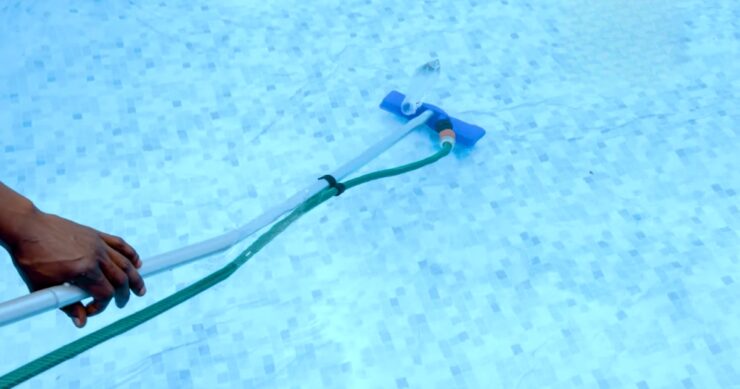Maintaining a swimming pool is a bit like taking care of a giant pet – it needs constant attention, care, and sometimes, a little chemistry magic to keep it happy. One of the key aspects of pool care is managing the pH level.
If you’ve noticed your pool water is causing irritation or the water looks murky, it might be time to check the pH levels. Today, I will break down how to lower the pool.
In the world of pools, pH is a measure of how acidic or basic the water is. The scale ranges from 0 to 14, with 7 being neutral. Pool water is happiest when it’s slightly basic, around 7.4 to 7.6.
When the pH level climbs above this range, the water becomes too basic, leading to uncomfortable swimming conditions and potentially damaging your pool equipment.
Signs Your Pool pH is Too High
Before we get into how to fix high pH levels, let’s identify the signs indicating an imbalance:
- Swimmers complain of skin and eye irritation.
- The water has a cloudy appearance.
- Scaling on the pool surface and equipment occurs.
- The effectiveness of chlorine diminishes, making the pool less sanitary.
For those seeking professional assistance in maintaining their pool’s pH levels and overall health, Pool Works LLC offers expert services tailored to your pool’s unique needs, ensuring it remains a safe and enjoyable environment for all.
How to Test Your Pool’s pH

Regular testing is crucial. You can use test strips or a digital tester. Aim to check the pH at least once a week.
Step-by-Step Testing
- Collect a water sample from the middle of your pool, away from the skimmers, and return.
- Dip your test strip or follow the instructions for your digital tester.
- Compare the results with the recommended pH levels.
Lowering Pool pH: The How-To
Once you’ve confirmed the pH is too high, it’s time to bring it down. Here are the steps and methods to safely reduce the pH in your pool.
The Role of pH Reducers
Chemicals like muriatic acid or sodium bisulfate are commonly used to lower pH. They must be handled with care, following the instructions on the label precisely.
Step-by-Step Guide to Adding Chemicals
- Wear Protective Gear: Always wear gloves and eye protection.
- Measure Correctly: Use the manufacturer’s guidelines to determine the amount needed based on your pool’s volume.
- Add to Water: For muriatic acid, dilute it with water before adding. For sodium bisulfate, you can add it directly to the pool.
- Pour Slowly: Add the chemical to the deep end of the pool while the filtration system is running.
- Wait and Retest: Allow the chemicals to circulate for at least 4 hours before retesting the pH.
Practical Tips for Maintaining Balanced pH

Achieving and maintaining the ideal pH level in your pool is an ongoing process. Here are additional tips to keep everything in balance:
- Regular Maintenance: Keep your pool clean. Leaves, debris, and algae can affect pH levels.
- Proper Circulation: Run your pool’s pump daily to ensure even distribution of chemicals.
- Balanced Alkalinity: Keep the total alkalinity of your pool water between 80-120 ppm. Alkalinity acts as a buffer for pH, making it more stable.
The Impact of Other Chemicals
It’s important to recognize that pH isn’t the only factor in pool chemistry. Chlorine, alkalinity, and calcium hardness all play a role. Each of these elements interacts with the others, so adjusting one can affect the rest.
For instance, the effectiveness of chlorine is heavily dependent on the pH level. At higher pH levels, chlorine’s ability to sanitize diminishes.
Pool Chemistry Parameters

| Parameter | Ideal Range |
| pH | 7.4 – 7.6 |
| Total Alkalinity | 80 – 120 ppm |
| Calcium Hardness | 200 – 400 ppm |
| Free Chlorine | 1 – 3 ppm |
Seasonal Adjustments
The season can significantly influence your pool’s chemistry. During summer, higher temperatures and increased use can cause pH levels to fluctuate more frequently.
It’s advisable to test more often and adjust as necessary. Conversely, in cooler months, you might find that your pool maintains its balance with less intervention.
How to Handle Rainwater
Rain can dilute your pool’s chemistry and lower pH levels. After heavy rain, test and adjust your pool’s chemistry as needed. Keeping a cover on your pool during rainy seasons can help mitigate these effects.
Advanced Tips

For those looking to dive deeper into pool chemistry, consider investing in a more comprehensive testing kit. These kits can provide detailed readings on chlorine, pH, alkalinity, and more.
The interplay between these elements can help you fine-tune your pool care routine for optimal water quality.
Automation
Technological advancements have introduced automated systems that monitor and adjust your pool’s chemistry. These systems can be a significant investment but offer convenience and peace of mind, ensuring your pool is always ready for a swim.
FAQs
How Often Should I Check My Pool’s pH?
Aim for once a week during regular use, increasing to daily checks if the pool is heavily used or after heavy rain.
Can I Swim Right After Adjusting the pH?
It’s best to wait until the pH levels stabilize within the recommended range, usually after a few hours of circulation.
What If I Lower the pH Too Much?
If the pH drops below 7.0, the water becomes acidic. To raise it, you’ll use a base, like sodium carbonate (soda ash), following a similar process to lower it.
Can rain change my pool’s pH level?
Yes, rainwater can alter your pool’s pH levels, often making it more acidic. It’s advisable to test and adjust your pool’s chemistry after significant rainfall.
Should I adjust pH or alkalinity first?
Adjust the total alkalinity first, as it helps stabilize pH levels. Once alkalinity is in the ideal range, you can then accurately adjust the pH.
Can using a pool cover affect pH levels?
Yes, using a pool cover can reduce pH fluctuations by limiting exposure to rainwater and debris and decreasing evaporation, which can affect pH balance.
Final Words
Keeping your pool’s pH balanced is essential for the health of the swimmers and the longevity of your pool. Regular testing and adjustment, when necessary, will ensure your pool remains a refreshing oasis.
Keep in mind that handling chemicals requires care, and it’s always better to add less and test again than to overdo it.
Maintaining your pool’s chemistry doesn’t have to be a daunting task. With these tips and a little bit of routine, you’ll ensure your pool remains a safe and enjoyable place for everyone.


